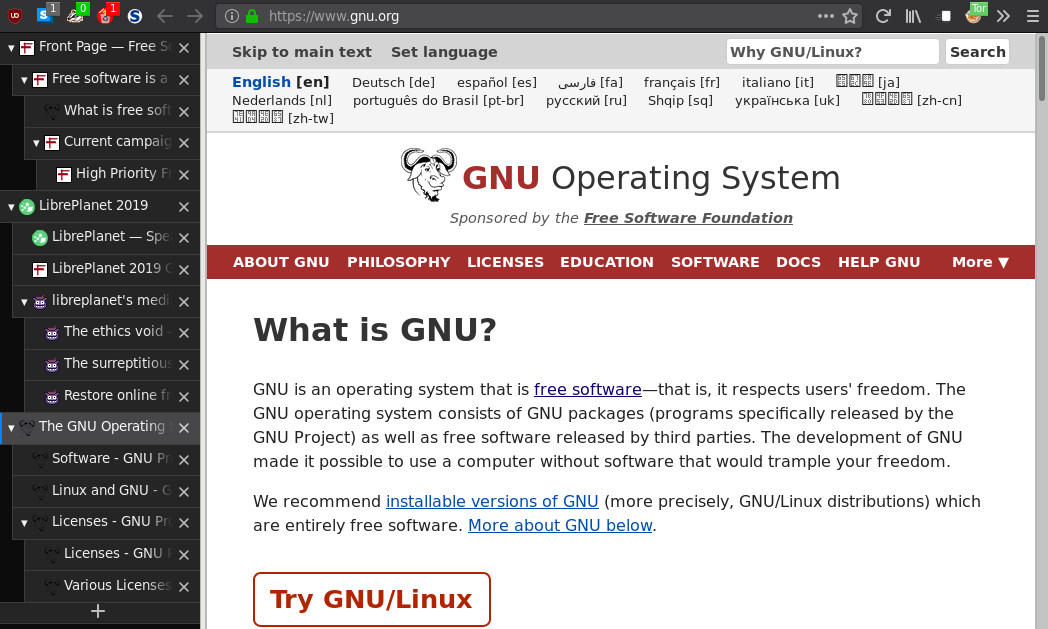19 KiB
Computational Symbiosis: Methods That Meld Mind and Machine
Slides [0/4]
Introduction B_note
Hello, everyone!
My name is Mike Gerwitz. I am a free software hacker and activist with a focus on user privacy and security. I'm also a GNU Maintainer and software evaluator, and hold other various other administrative duties within GNU. I have about twenty years of programming experience, half of that professionally, And I've been a computer user for longer.
So I've been around long enough to see a decent evolution in how we interact with computers. I've gotten a sense of what feel right and wrong as both a user and a hacker. And interestingly, what I've settled on for my computing is really a toolset that was devised decades before I was even born, with some light modernization.
And those tools don't work for everyone. But I think a subset of them can.
So I'm here today to try to explore a healthy balance, and walk you through what I see as an efficient means of computing, based on the problems that I've encountered, and the problems I've seen others encounter over the years.
Choreographed Workflows B_fullframe
Choreographed Workflows
Practical Freedom B_fullframe
Practical Freedom
Practical Example: Web Browser [0/3]
Example: Web Browser B_frame

Notes B_noteNH
One of the only GUIs I use on a day-to-day basis is my web browser. In this case, GNU Icecat, which is a Firefox derivative. This is a screenshot of an admittedly staged session, and contains a number of addons. Perhaps most prominent is Tree-Style Tab, which displays tabs in a hierarchy off to the left rather than flatly at the top. I find this visual enhancement very useful when I have dozens or hundreds of tabs open.
There are text-mode web browsers, and I do occasionally use them. But it provides a very different experience. I don't want to spend too much time on my rationale, which as a professional web developer and activist focused on privacy and security run quite deep. For the sake of this talk, let's just recognize that most people who browse the internet use a graphical web browser; that's a simple fact.
I chose a web browser as an example because I feel that it's something that most everyone can relate to using, and most everyone can recognize the utility in—most people using Internet-connected devices use one at least a few times a week, if not every day.
Finding Text (Mouse-Driven GUI Interaction) B_frame
Images B_columns
Left B_column

Right B_column

Notes B_noteNH
The Web is used for many different things today, but its original purpose is to render documents. Take Wikipedia for instance. Or the LibrePlanet conference website. If you are looking for something specific on a page, a common operation is to search for a word or phrase, like shown here.
Now, how exactly to do this with a mouse varies depending on what program you're using, but here I highlighted the steps in a modern Icecat or Firefox. You start by clicking on the little hamburger, hotdog, or whatever-you-want-to-call-it menu in the upper-right, and then click on "Find in This Page" within the popup. This then opens a bar at the bottom of the page with an area to type the word or phrase you're searching for. It highlights and scrolls to the first match as you type, and has a button to highlight all results. It also shows the number of results off to the right. It's a simple, yet powerful mechanism that is pretty easy to use.
So does a GUI provide the right tool for the job? If you're just searching for a name or concept, sure, that seems to be true. A GUI is useful here.
But notice how I had to convey these steps to you. I had to take screenshots and highlight where to click with the mouse. Since a GUI is inherently very visual, so are the instructions on how to use it. There is no canonical representation for these instructions, because it involves clicking on elements that have no clear name to the user. Unless you're in software or UX development, you may not know what to call that menu in the upper-right. Further, what do you call the bar at the bottom of the page? You have to describe it in a way that reproduces what the user sees.
GUIs Change Over Time B_frame
Images B_columns
Left B_column

Right B_column

Ctrl+F
Notes B_noteNH
Another difficult thing is: GUIs change over time. I'm sure there are people here who remember earlier versions of Firefox that didn't have the hamburger menu, where the Find menu option was in the Edit menu. By the way, those old menus do still exist if you hit Alt. I miss the old menus, personally, because it did make it easier to convey actions in text. Saying "Go to Edit - Find" is pretty clear, and those menu positions were always in the same place across the entire desktop environment. Now individual programs may vary in the their user experience.
But do you notice something in common between these two screenshots?
There's something that hasn't changed over time—something
that has been the same for decades!
Ctrl+F.
When you type Ctrl+F,
it immediately opens that search bar.
Further,
it works in any browser.
Not only that,
but Ctrl+F is so universal that it works in nearly every GUI program that
offers some type of search!
And it's context-sensitive!
The program will just Do The Right Thing depending on where you are or what
you're doing.
Muscle memory
Thank You B_fullframe
Thank you.
Mike Gerwitz
\bigskip
Slides and Source Code Available Online
<https://mikegerwitz.com/talks/cs4m>
\bigskip
\vfill
Licensed under the Creative Commons Attribution ShareAlike 4.0 International License